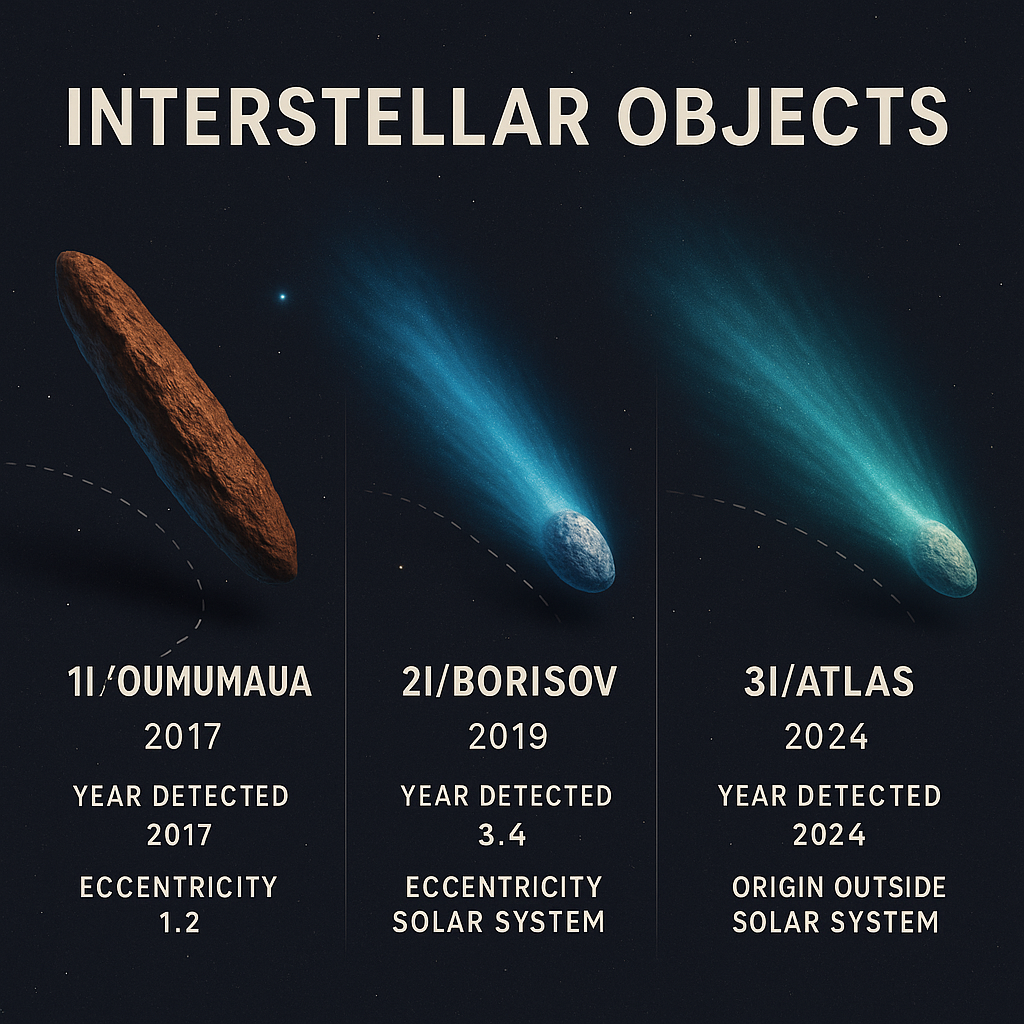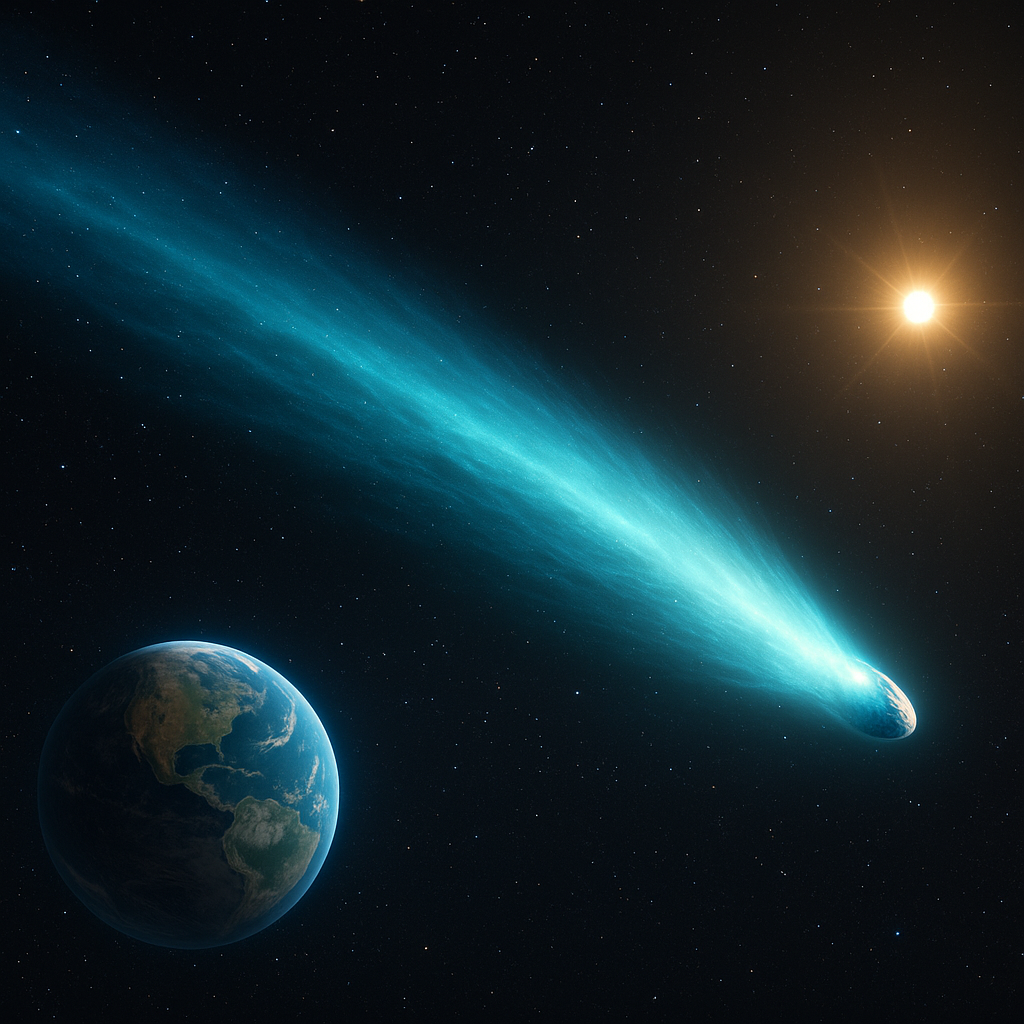A New Interstellar Mystery Enters Our Solar System
In a universe filled with wonders and secrets, every now and then something truly alien crosses our path—literally. In late 2023, astronomers detected a third interstellar object zooming through our solar system. Officially designated 3I/ATLAS, this visitor comes after the now-infamous ʻOumuamua (2017) and 2I/Borisov (2019). But unlike its predecessors, 3I/ATLAS arrives with eerie timing, unusual characteristics, and a trajectory that has reignited the age-old debate: Are we being watched?
Discovered by the Asteroid Terrestrial-impact Last Alert System (ATLAS), the object was swiftly confirmed to be unbound from the Sun, marking it as only the third confirmed interstellar object. What makes it so intriguing is not just its origin—but the growing body of scientific and speculative interpretations surrounding it.
The Discovery: From Blip to Beacon
3I/ATLAS (also known as C/2023 A3) was first spotted on January 9, 2023 by the ATLAS observatory in South Africa. At the time, it appeared as an unassuming distant comet. But further analysis of its hyperbolic orbit—with an eccentricity greater than 1—quickly ruled out a solar origin.
Its trajectory, when projected backward, suggested it had traveled from beyond the Oort Cloud, possibly from another star system or the interstellar medium itself. This designation made it part of a short but significant list of known interstellar objects passing through our solar system.
Meet the Interstellar Trio: 3I, ʻOumuamua, and Borisov
To understand why 3I/ATLAS has sparked such interest, we must compare it to its cosmic siblings:
1I/ʻOumuamua (2017)
- First detected interstellar object.
- No visible tail, no outgassing, pancake-like shape.
- Accelerated strangely—without any obvious propulsion.
- Harvard astronomer Avi Loeb suggested it might be an alien probe.
2I/Borisov (2019)
- Appeared and behaved like a “normal” comet.
- Outgassed regularly, typical elliptical shape.
- Offered fewer mysteries, but confirmed interstellar comets exist.
3I/ATLAS (2023)
- Has features of both: shows cometary activity, but with some orbital oddities.
- Still under observation, but speculation is mounting about its density, trajectory, and origin.

Orbital Oddities and Peculiar Parameters
Unlike ʻOumuamua, 3I/ATLAS is brighter, with a visible coma and a potential tail. Yet its orbital characteristics remain perplexing.
Key anomalies:
- Hyperbolic excess velocity higher than average comets.
- Entered from southern skies, a region previously associated with other mysterious phenomena.
- Perihelion (closest point to the Sun) occurred around September 2024, making it an active object right now.
Some analysts suggest its path intersects near-Earth space in a curious way, fueling theories about gravitational targeting—a maneuver theoretically possible for artificial objects using planetary flybys.
Scientific Explanations: Natural, But Uncommon
Astrophysicists and planetary scientists have proposed more grounded explanations:
- 3I/ATLAS could be a fragment from a disrupted exo-comet ejected from its home system.
- Its hyperbolic path might result from stellar encounters or galactic tides.
- Spectral analysis suggests the object contains volatile ices and possibly organic compounds, similar to long-period comets.
But despite these explanations, certain behaviors—such as its relative brightness and early activity—have not been fully accounted for.
Alternative Theories: Alien Probe or Cosmic Message?
In the true spirit of Myst Files, we must ask: What if it’s not natural?
Theory 1: Reconnaissance Probe
Following ʻOumuamua’s unresolved mysteries, some believe these interstellar objects could be scouting probes—launched by advanced civilizations using light sails, gravity assists, or self-replicating drones. Could 3I/ATLAS be transmitting data back to its creators?
Theory 2: Seeding Device
Others speculate that comets like 3I/ATLAS are panspermia agents, intentionally or unintentionally spreading life across the galaxy. Its composition could hold microbial life or complex molecules—an alien test tube thrown across the void.
Theory 3: Interstellar Warning
More fringe theories propose 3I/ATLAS could be a warning signal—either a cosmic “breadcrumb” left behind or even a harbinger of celestial events. The timing of its perihelion—coinciding with major geopolitical tensions and increasing solar activity—has not gone unnoticed by conspiracy theorists.
Plans for Interception: Chasing the Visitor
In a striking development, space agencies and private researchers have already begun evaluating mission concepts to intercept 3I/ATLAS, learning from missed opportunities with ʻOumuamua.
Current Proposals:
- ESA’s Comet Interceptor Mission (launching 2029) is already being adapted to be more flexible for future interstellar flybys.
- Breakthrough Starshot and Project Lyra—two private ventures—have simulated catch-up maneuvers using solar sails or next-gen ion propulsion.
- NASA-funded studies in 2023 proposed a “launch-now-intercept-later” model, deploying probes to wait in deep space.
But with 3I/ATLAS already moving fast, catching it before it exits the solar system would require unprecedented acceleration, timing, and coordination.
Could we be racing against time to uncover secrets that were never meant for us?
Historical and Esoteric Echoes
Some ancient texts and esoteric traditions speak of celestial messengers, “fiery stars” crossing the heavens before world-changing events. From the Book of Revelation’s Wormwood to Hopi prophecies of the Blue Kachina, sky-born anomalies have long been associated with warning signs or cosmic resets.
Though purely symbolic, such motifs resonate deeply in the collective psyche—especially in a time when humanity is questioning its place in the universe.
Closing Thoughts: Coincidence or Contact?
3I/ATLAS may well be “just” another interstellar traveler—a sliver of cosmic ice cast out by the random ballet of star systems. But its arrival raises questions we’re not fully prepared to answer.
Why now? Why here? And why so few?
If these objects are random, why have three arrived within six years, after millennia of silence?
Are we simply paying more attention, or are we being paid a visit?
Regardless of the truth, 3I/ATLAS reminds us of something profound: The universe is alive, active, and far stranger than we imagined. And maybe—just maybe—we’re not alone in watching.

Excellent read, I just passed this onto a colleague who was doing a little research on that. And he just bought me lunch since I found it for him smile So let me rephrase that: Thank you for lunch!